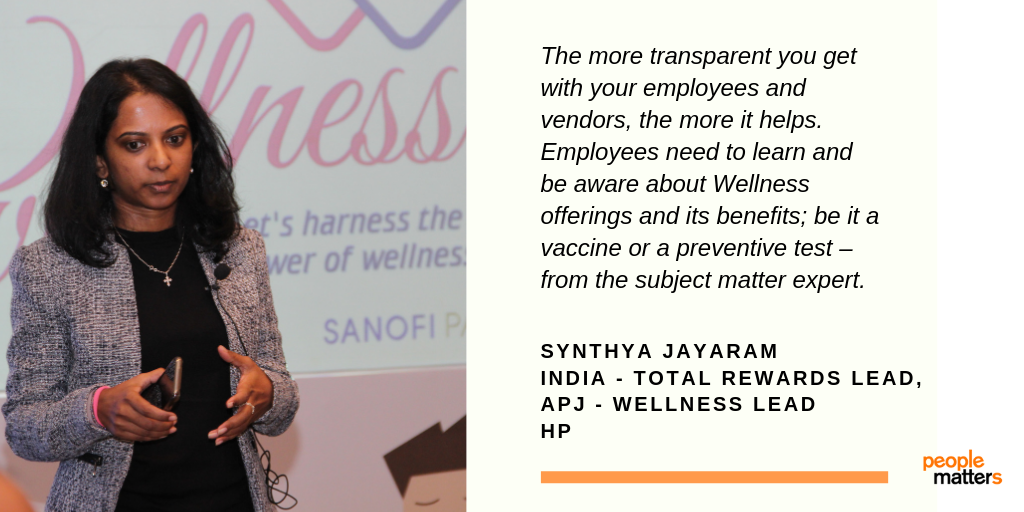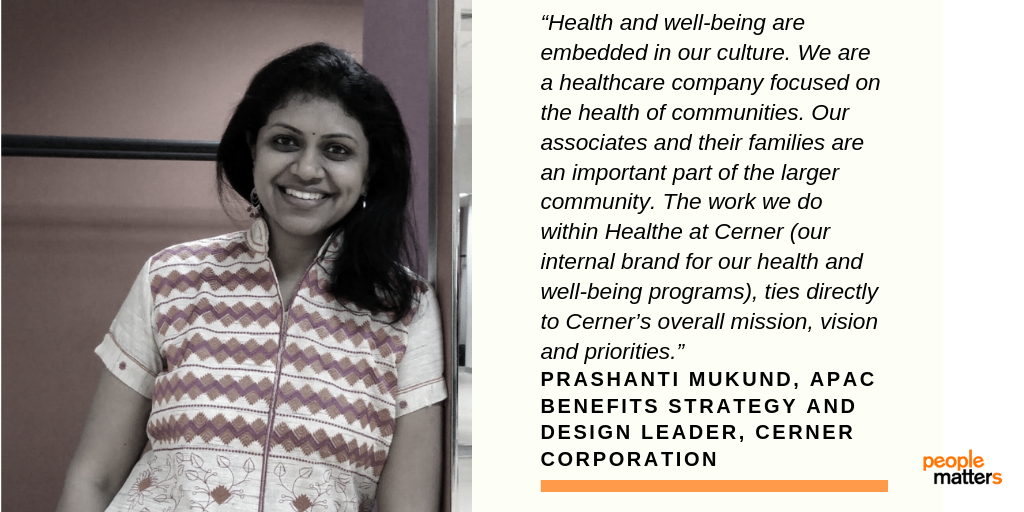Designing a future-ready wellness strategy

Wellness Wins Read similar articles

A high-performance organization begins with the well-being of its employees.
Having a strong wellness strategy is not a luxury for organizations anymore, in fact, it is a critical priority for businesses. With more work pressure, rapid disruptions and climatic challenges, employees’ health has become a major concern for organizations. The well-being of employees directly impacts the productivity of the company and business, and more and more organizations are realizing that. As per experts, the effective adoption of workplace wellness programs could save India Inc. income up to $20 Bn by 2018 through a reduction in absenteeism rate by 1%.
The research - Contemporary Trends & Challenges Of Workplace Wellness Programs In India 2019 shows that 62 percent of the workforce feels that the current wellness programs that their organizations provide are in need of improvement.
Many chronic diseases are preventable and implementing a holistic approach to corporate wellness programs is an influential way to educate employees on the importance of creating healthy habits and the benefits of sticking to wellness goals. But how to design this future-ready wellness strategy is a challenge most of the talent leaders and businesses today are grappling with.
To discuss the challenge in length and to explore some ways to mitigate the challenge, People Matters and Sanofi Pasteur hosted a breakfast roundtable in Bengaluru, where leaders from diverse companies and industries came together and discussed on the topic. Mrugesh Dholakia, Head - Bien-etre, Sanofi shared some interesting highlights from the report and emphasized on the gaps in the current wellness strategy of organizations such as preventing commonly occurring diseases such as flu, prioritizing diseases that contribute more healthcare cost. Synthya Jayaram, India - Total Rewards Lead, Wellness APJ, HP, and Prashanti Mukund, APAC Benefits Strategy and Design Leader, Cerner Corporation shared some of the best practices of their respective companies and a few insights from their journey.
Here are a few key insights from the session:
Beyond wellness programs: Creating a culture of wellness
Transparency is key when it comes to building a culture of wellness. The more clear the communication with each stakeholder is, the further the interest and buy-in of everyone involved gets enhanced. At the core, companies are framing these programs for the employees and its important to understand their needs and share the same with the wellness partner as well. Secondly, communicating with the employees and increasing the conversations around wellness is crucial for ensuring that wellness becomes a part of the culture.

Small initiatives or steps here create a huge impact. While some might think that having standees or posters, sending emails and organizing small events are minor activities, they actually create urgency and ensure that employees are reminded to take care of their and each other's wellness every day.

Building a culture of wellness is also owned by managers and leaders. Having wellness conversations is as important as having performance conversations. It not only helps in fostering a culture of wellness but also strengthens the employee-employer relationship.
Result-oriented & effective wellness strategy: Opportunities & Challenges
To be able to frame a result-oriented wellness strategy organizations have to focus on metrics from the very beginning. Data plays a primary role here. Thanks to the available technology today, talent leaders can seamlessly gather data to understand the wellness needs of the employees. Surveys, one to one conversations are other simpler ways to collect this data. On the other hand, it is also important to prepare for the upcoming climatic changes and issues that can hamper the health of employees.
Based on the internal and external trends and requirements, HR leaders can frame an effective wellness strategy and then be able to compare its effectiveness by further analyzing the absenteeism rates. These numbers and primary research will help companies in building a more structured future ready wellness strategy that is also result oriented.
However, research done by People Matters and Sanofi has shown that there are still several gaps in designing a result-oriented & effective wellness strategy. Even more appalling than the fact that 55 percent of the surveyed organizations not mapping the success of their wellness programs is that 65 percent claim to not measure the productivity benefits of the wellness programs.
Thus, the road towards designing a result-oriented and effective wellness strategy still seems to be longer.
Customizing and prioritizing wellness strategy: The way forward
It is no news that the one-size-fits-all approach does not work anymore.
Every company’s culture, vision, goals, and demographics are different. In fact, multiple locations within the same organization often have distinct cultures. Therefore, the definition of wellness and their needs will vary substantially. Uncovering and understanding what wellness means for each organization is the first step to creating a relevant and tailored program to best support the employees.
Further, for employees across different roles, the wellness priorities will be varied. For instance, for a retail company with the majority of the workforce on the ground, the major wellness challenge would be that they have to stand in shops for hours. While for the rest of its staff that stays in office and has a desk job the wellness needs would be different.
Besides physical wellbeing, the other aspects like emotional, financial and social, among others will also be unique for everyone.
A lot of time hence needs to go in understanding these needs of different employees which can then be segmented into different buckets based on how commonality and the organizations can have unique wellness strategies and programs framed for each of these sets of employees.
The bottom line is that to be able to design a future-ready wellness strategy organizations have to invest more time, energy and maybe even money in some cases. And with more data, insights, and understanding of the challenges they are dealing with and the needs they wish to cater to can they be able to build a culture of wellness, frame result-oriented and effective wellness programs to enhance workplace productivity and reduce absenteeism.
(The session is based on the roundtable session organized by People Matters and Sanofi Pasteur on the theme, ‘Design a future-ready wellness strategy - The missing piece of preventive healthcare.’)





